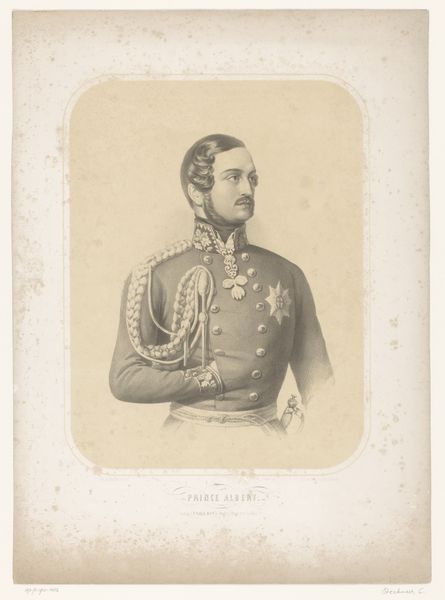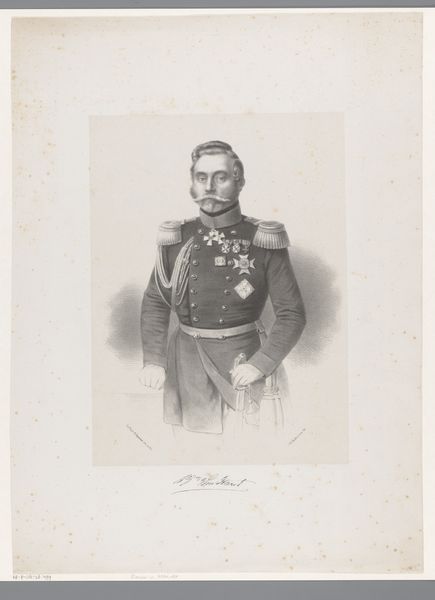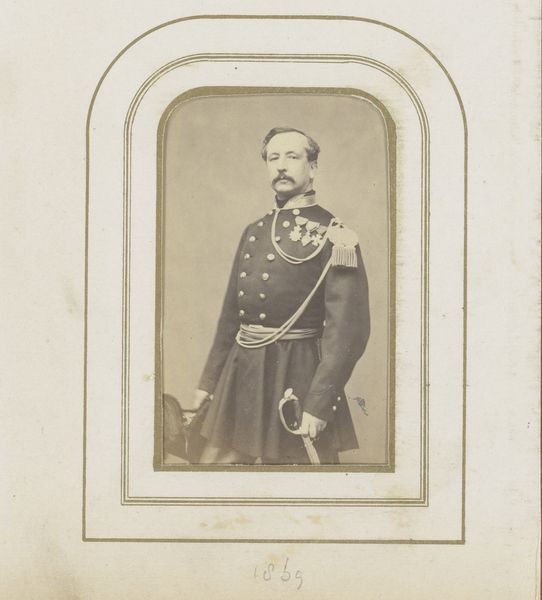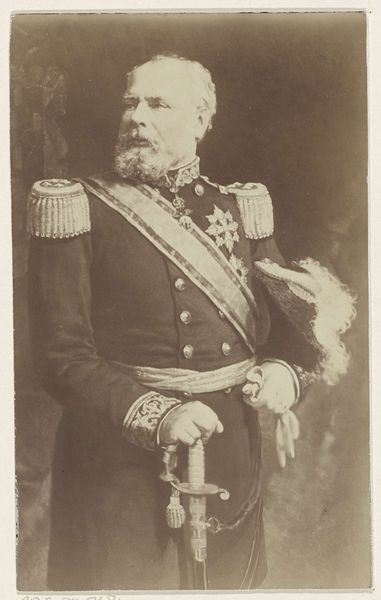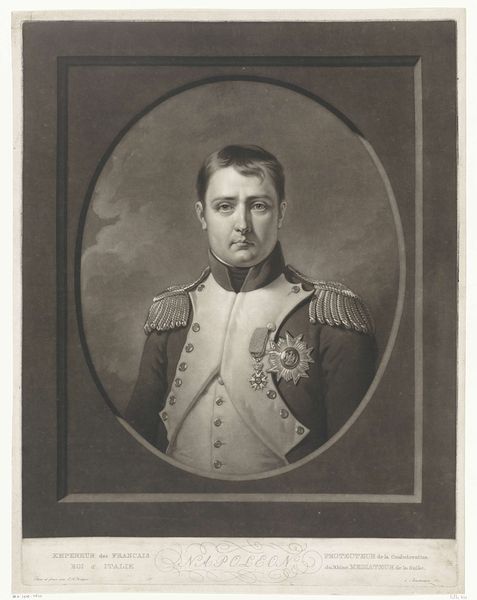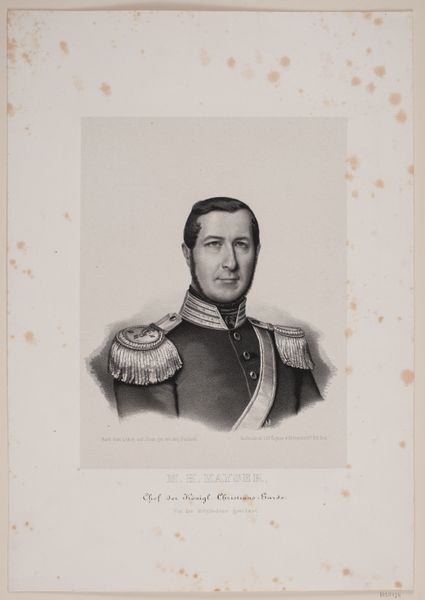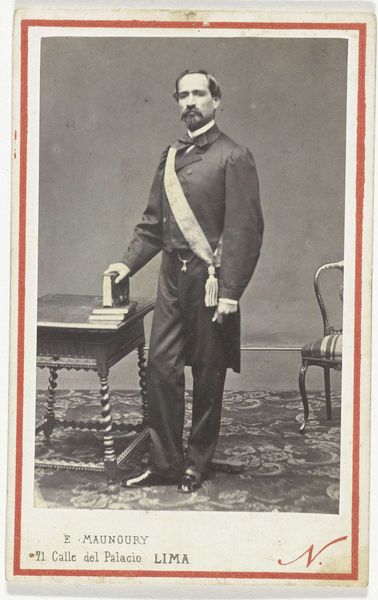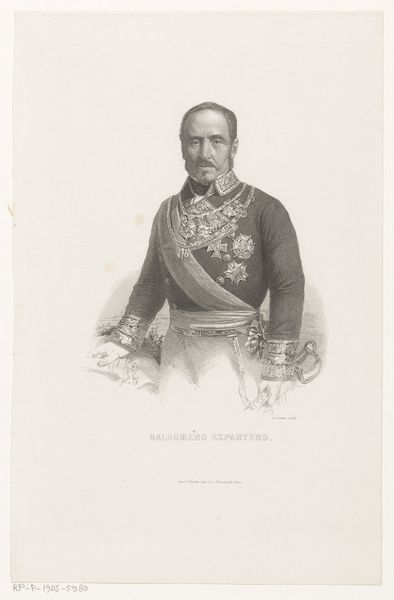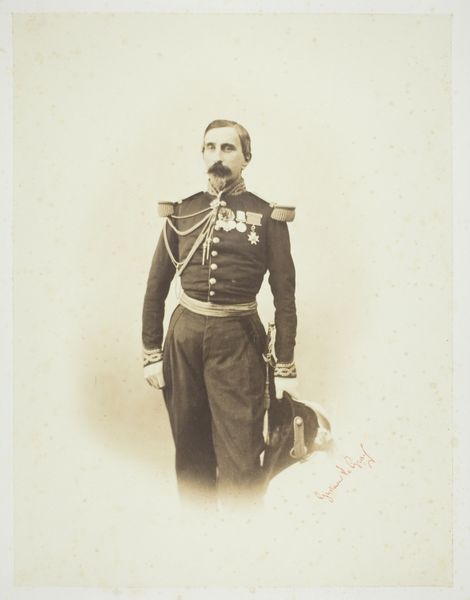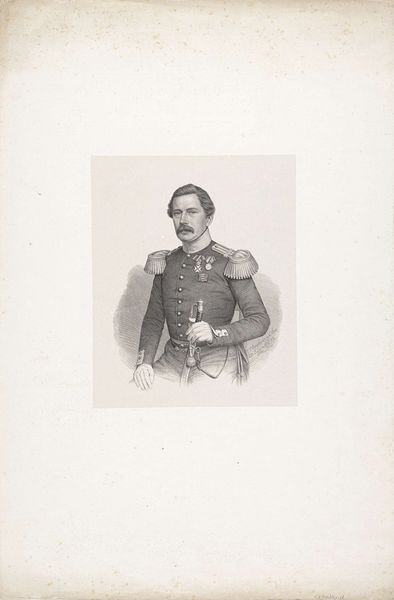
print, daguerreotype, photography
#
portrait
#
16_19th-century
# print
#
asian-art
#
daguerreotype
#
photography
#
framed image
#
limited contrast and shading
Dimensions: height 95 mm, width 55 mm
Copyright: Rijks Museum: Open Domain
Curator: What a compelling study in visual rhetoric! We’re looking at a print made using a daguerreotype; it's a portrait of Mangkoe Negoro IV, dating from around 1865-1870, attributed to Woodbury & Page, residing here at the Rijksmuseum. Editor: He strikes quite a formal pose. Almost melancholy, I'd say. The tonality, though limited in contrast, achieves a certain gravity that affects me immediately. Curator: Notice how the image, though photographic in origin, is framed in an oval, immediately harking back to painted portraiture traditions. The composition is essentially a study in geometric forms, the oval, the lines of his uniform. Editor: Absolutely, and observe the sheer weight of the symbols he carries! The medals, the epaulettes, even the sword – they're not merely decorative; they’re potent symbols of power and status. His gaze feels carefully calculated to convey authority. Curator: It is meticulously calibrated! Semiotically speaking, his pose, combined with the accoutrements, operate as signifiers for leadership. What intrigues me most, however, is how the limited tonal range works. See how the shading subtly molds the face, providing only hints? It creates an atmosphere. Editor: And yet, the effect is one of imposing dignity, which speaks volumes. The limited shading focuses attention on the facial features, especially his eyes and mouth. He isn’t just wearing symbols; he embodies the very values and legacy that these represent, his stern facial expression seems to assert something of the kind. It’s almost like a map of cultural memory etched on his face. Curator: Indeed! And perhaps Woodbury & Page knowingly used these stark, flattened tonal arrangements to give greater visual emphasis on what they sought to portray. What you have said speaks to a profound ability in capturing and relaying so much cultural context through what might seem—to some—merely to be tonal arrangements. Editor: Thinking about this piece, I’m left reflecting on the way in which photography—often hailed for its realism—is employed here with such clear awareness of the traditions and demands of portraiture, using symbol, form and expression to construct identity. Curator: And for myself, what continues to stand out about the daguerrotype here is the successful manipulation of these photographic means to project Mangkoe Negoro IV into the semiotic ether as a timeless, iconic figure.
Comments
No comments
Be the first to comment and join the conversation on the ultimate creative platform.
